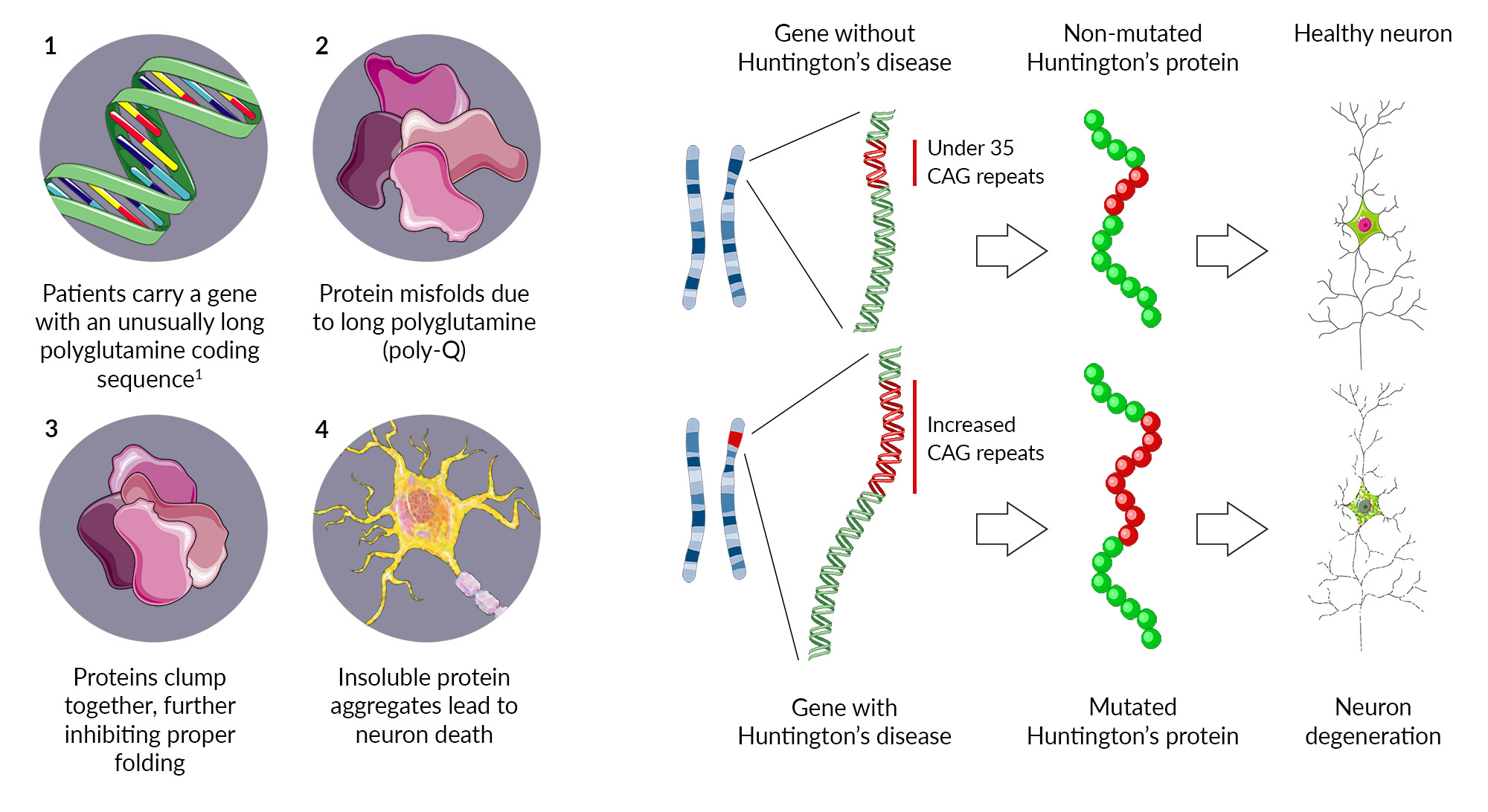Discovering breakthroughs in fibrosis and neurodegeneration
NEURODEGENERATIVE DISEASES (ORPHAN POLY-Q DISEASES)
Poly-Q neurodegenerative diseases such as Huntington’s and Machado-Joseph diseases are autosomal dominant genetic diseases that develop when mutant proteins with extended poly-Q repeats are cleaved and form toxic protein aggregates within neurons. This then causes neuronal cell death (neurodegeneration).

These currently incurable diseases result from mutations causing expansion of trinucleotide (CAG) repeat region of genes. CAG is the trinucleotide codon for Glutamine, or the single letter designation for Glutamine, “Q”, hence the designation as a “poly-Q” disease.
Within the United States, approximately 41,000 people have symptomatic Huntington’s disease and more than 200,000 are estimated to be at risk for this progressive, incurable neurodegenerative condition.
more about our science
references
Weber, 2014, Biomed Res Intl. 2014: 701758.
Menzies, 2015, Cell Death Differ. 22(3): 433–444.
